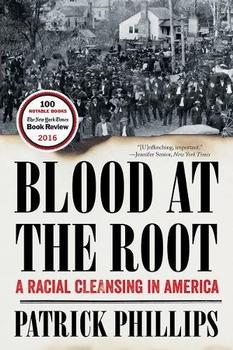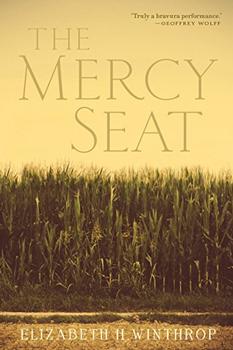Summary | Excerpt | Reviews | Beyond the book | Read-Alikes | Genres & Themes | Author Bio

Critics' Opinion:
Readers' Opinion:
First Published:
Sep 2016, 320 pages
Paperback:
Sep 2017, 320 pages
 Book Reviewed by:
Book Reviewed by:
Mollie Smith Waters
Buy This Book
On September 8, 1912, in Forsyth County, Georgia, Mae Crow, a white teenaged girl, was beaten and raped. The next day her battered body was discovered, and for nearly two weeks Mae lingered between life and death, finally succumbing to her injuries on September 23. Her brutal attack was the catalyst for an already simmering pot of racial hatred in Forsyth County because it came only days after another attack on a white woman, Ellen Grice, in the same area. With emotions already running high, a scapegoat for Crow's rape and death was needed, and fast. Three black men were accused of the crime. Her death, as well as the events that followed – including the executions of her supposed attackers, as well as the expulsion of a staggering number of black people from the county – would become the stuff of legend. Patrick Phillips revisits this horrific crime and its aftermath in his non-fiction book Blood at the Root: A Racial Cleansing in America.
Three men ended up accused of Crow's rape and death: "Big" Rob Edwards, who would be lynched shortly after his arrest, Ernest Knox, and Oscar Daniel. Knox and Daniel, only in their teens, were convicted of the crime and publicly hanged on October 25, 1912, witnessed by an estimated 5,000 people.
The deaths of Edwards, Knox, and Daniel seemed to whet the appetite for more violence from the white citizens of Forsyth County. Night riders began to appear at the homes of black families living in the county, and their message was clear: "Get out!" They did; some 1,100 people left. Over the next seventy-five years, Forsyth County remained predominantly white and, in January 1987, history seemed on the verge of repeating itself when a protest march for equality almost met with disaster. Chuck Blackburn, a white resident of Cumming in Forsyth County, proposed a unity march both in memory of the 1912 events and in honor of Dr. Martin Luther King, Jr.'s birthday. Other white residents of Forsyth County got wind of the plan and promptly organized a counter-protest rally to intimidate them. On the day of the march, things quickly got out of hand, and the sheriff at the time, Wesley Walraven, warned the marchers he could not guarantee their safety. Dispersing, the marchers returned on January 24 with a larger group and the National Guard for protection. Unfortunately, race relations in the county were slow to improve in the years that followed.
Patrick Phillips chronicles the dark history of Forsyth County. The book is steeped in research and includes a lengthy footnotes section that details his sources. He recounts the 1912 story as it happened, but with clear judgment and condemnation of some of its central figures, who either turned a blind eye or encouraged additional violence. Forsyth County Sheriff William "Bill" Reid was one of these figures, whose mismanagement and pettiness were almost certainly responsible for Edwards' lynching. Although the men were convicted of committing the crime against Mae Crow, an attack on a wealthy white planter, Dabner Elliot, after the executions of Knox and Daniel, suggests they may have been wrongly accused. Phillips writes, "When doctors announced that Elliot had died from his wounds, few whites were willing to even consider the possibility that someone other than a vengeful black assailant had killed Dabner Elliot, presumably in retaliation for the deaths of Edwards, Knox, and Daniel. But privately, some people must have shaken their heads at the fact that Elliot had died in the exact same fashion as Mae Crow and in almost the exact same place…There was still a murderer lurking somewhere in the woods of Oscarville." (Oscarville is the small community in Forsyth County where Mae Crow lived and was attacked.)
Phillips' language is, at times, moving, and his understanding of the conditions of Jim Crow South (see Beyond the Book) feels complete. For example, he writes: "In a Jim Crow South where African Americans were disenfranchised at the polls and powerless in the courts, landowners could hire and rent to poor blacks, secure in the knowledge that if there was ever a dispute over rent payments, crop shares, or wages, the white man's word was sure to prevail."
While the bulk of Phillips' book is spent on the 1912 events, the final sections are devoted to what happened next. Over the years that followed, Forsyth County remained almost one hundred percent white. When minority groups did attempt to move in, they met with harassment and violence. Phillips helps readers to understand how much racial intolerance continued to exist in the county, and the author encourages readers to realize how the past shapes the future.
An engaging portrait of the South's haunting legacy, the lessons of Blood at the Root: A Racial Cleansing in America will stick with readers long after they have completed the book. Regrettably, they are lessons Americans still need to learn, for many black Americans today continue to experience racial injustice. Incidents like Trayvon Martin's murder and the unrest in Ferguson, Missouri are modern reminders of how much work Americans need to do to eradicate racial intolerance. The plight for equality in the United States continues.
![]() This review was originally published in The BookBrowse Review in September 2016, and has been updated for the
December 2016 edition.
Click here to go to this issue.
This review was originally published in The BookBrowse Review in September 2016, and has been updated for the
December 2016 edition.
Click here to go to this issue.

If you liked Blood at the Root, try these:

by Scott Ellsworth
Published 2022
More than one-thousand homes and businesses. Restaurants and movie theaters, churches and doctors' offices, a hospital, a public library, a post office. Looted, burned, and bombed from the air.

by Elizabeth H. Winthrop
Published 2019
An incisive, meticulously crafted portrait of race, racism, and injustice in the Jim Crow era South that is as intimate and tense as a stage drama, The Mercy Seat is a stunning account of one town's foundering over a trauma in their midst.





The House on Biscayne Bay
by Chanel Cleeton
As death stalks a gothic mansion in Miami, the lives of two women intertwine as the past and present collide.

The Flower Sisters
by Michelle Collins Anderson
From the new Fannie Flagg of the Ozarks, a richly-woven story of family, forgiveness, and reinvention.

The Funeral Cryer by Wenyan Lu
Debut novelist Wenyan Lu brings us this witty yet profound story about one woman's midlife reawakening in contemporary rural China.
Your guide toexceptional books
BookBrowse seeks out and recommends the best in contemporary fiction and nonfiction—books that not only engage and entertain but also deepen our understanding of ourselves and the world around us.